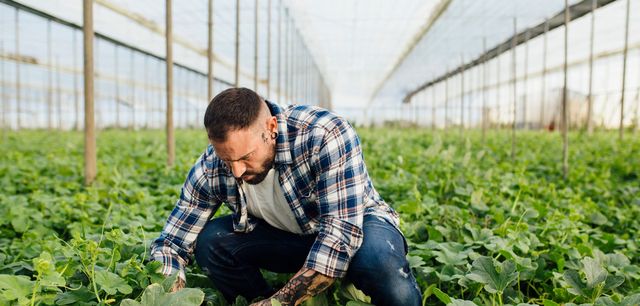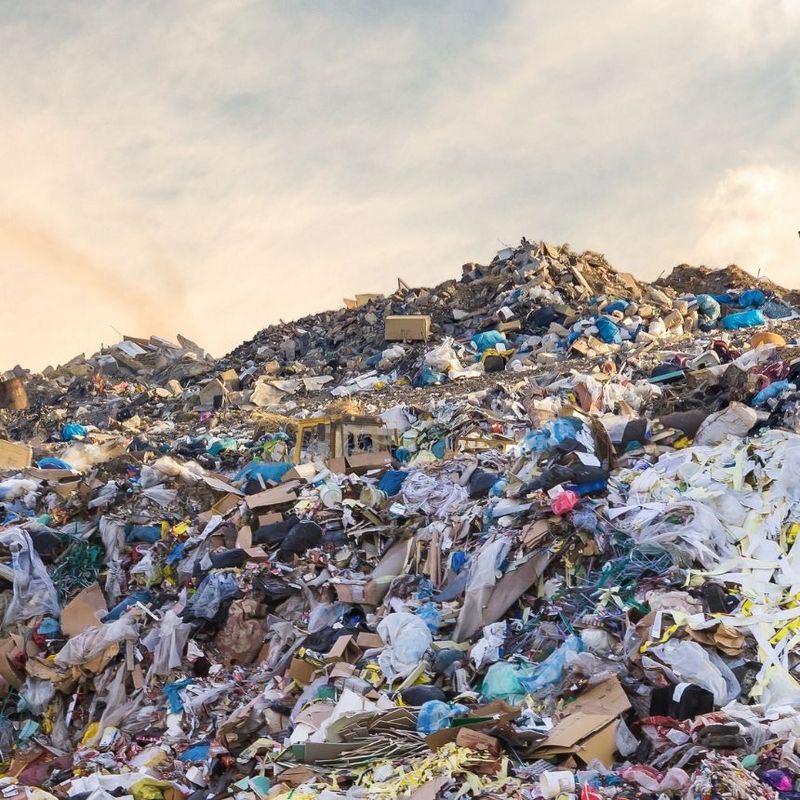25 July 2024
With heat waves, droughts, heavy rain and hailstorms, the consequences of climate change have long been making themselves felt even in countries like Germany. Agriculture is trying to adapt to these changes – with crops and cultivation methods that are better able to cope with extreme climatic conditions.
The name of the bearer of hope is Gandalf. No, not the awe-inspiring wizard from J. R. R. Tolkien's fantasy epic “Lord of the Rings”, but a small melon with sweet flesh that Daniel Willhalm has been growing in Lindau for about five years. The fruit grower has seen at first-hand how melons have started thriving on the land around Lake Constance, alongside southern apple varieties.
The climatic conditions in Germany have changed: Longer periods of heat make for drier soils. At the same time, plants are coming into flower ever earlier due to the milder springs, making them vulnerable to sudden frosts which can lead to crop failures for winemakers or fruit growers. This is one of the reasons why fruit growers like Mr. Willhalm are looking for alternatives or crops to complement apples, for example.
To ensure that his heat-loving sugar melons ripen earlier and are protected from rain, Mr. Willhalm grows them in an open foil tunnel. On a neighbouring plot, watermelons are growing in the open air; fruit growers in Brandenburg and Lower Saxony are also trying their hand at watermelon cultivation to position themselves more broadly in response to the climatic changes.
Grain millet from Lower Franconia
Which crops are particularly suitable for hotter conditions is the subject of scientific research being carried out at the Bavarian State Research Centre for Agriculture (LfL). Experiments are being carried out here with crops including black cumin, dry rice, chickpeas, sesame, peanuts and grain millet. The latter is an alternative to maize, for example, which is coming under particular pressure worldwide due to increasing heat and lack of rain.
Grain millet has evolved various strategies to cope with dry conditions: Its long roots penetrate deeper into the ground to reach precious water supplies. The waxy layer on its stalks and leaves also prevents water loss through evaporation. And if conditions get too dry for even these strategies to work, the crop just takes a break, only growing again when it gets enough water. In fact, millet has already proven its potential: On trial fields in Schwarzenau in Lower Franconia, its yield in the drought-ridden summer of 2022 far outstripped that of grain maize.
A question of habit
Until now, the crop has mainly been harvested for use as feed for pigs or chickens, studies having shown that it is well suited to this use. And yet, the sale of millet in farm shops for human consumption has been sluggish so far, Janina Goldbach of the LfL told Bavarian agricultural periodical the Bayerisches Landwirtschaftliche Wochenblatt. Noodles or flour made of millet have not yet really taken off in Germany, says the expert.
If new approaches to crop-growing like these are going to succeed, consumers are also going to have to change their dietary habits. “There will be no more climate protection or changes in agricultural practice without changes in eating habits,” Frank Ewert, professor at the Leibniz Centre for Agricultural Landscape Research (ZALF), told ZDF.
© Adobe StockAre peanuts - just like dried rice or grain millet - particularly suitable for hotter conditions? Relevant scientific experiments are underway.
Chickpeas from Brandenburg
Of course, growing new species also has its challenges. Chickpeas, for example, usually thrive in subtropical areas. Farmers in Brandenburg and Franconia are now also planting this protein-rich legume. In terms of water and nutrients, it is a frugal crop. And because its roots bind nitrogen, the chickpea, like other legumes, improves soil fertility. If it rains at harvest time, however, chickpeas will flower again. If this happens, the harvest will be more meagre, as was the case in the wet summer of 2021. Peanuts, on the other hand, which a farmer in Bavaria has tried out, require special machines for efficient harvesting which must first be procured from the United States, for example.
Introducing new species is not the only way to respond to the consequences of climate change. Seed manufacturers are trying, among other things, to make established crops such as wheat or rye fit for the changed conditions. They are breeding water-retentive varieties that can be harvested a little earlier, thereby taking periods of particularly intense heat out of the equation. In the view of researchers at Munich’s Ludwig Maximilian University, such breeds have great potential to limit the impacts of climate change. But this won't happen overnight: It takes eight to ten years for a new variety to be bred, tested and approved.
In the shade of the trees
But other cultivation methods can also be used in response to the new conditions. To provide shade for their plants or animals and protect them from heat, farmers can plant trees in and around their fields and pastures. This principle is known as agroforestry, which used to be common practice in orchards but was relegated to the margins with the industrialisation of agriculture.
Since large machines have become an indispensable part of today’s agriculture, new agroforestry systems have had to adapt to modern conditions: This means planting fruit, nut or timber trees in long rows with broad strips of field on each side to ensure as far as possible that nothing gets in the way of sowing and harvesting.
Good for the microclimate
The combination of trees and fields offers a number of advantages alongside the cooling effect: The trees protect the soil from erosion and make it more fertile. They improve the microclimate in the fields by transporting water from deeper underground layers to the surface, where it evaporates. This, in turn, benefits the crops. Since trees offer shelter and food to larger and smaller animals alike, they also increase biodiversity in farming.
Given all these benefits, why aren’t more farmers growing trees? The changeover is initially associated with higher costs and involves more work. Not only this, but farmers also need buyers for their products, some of which they produce in relatively small quantities. And because trees grow slower than corn or wheat, it also takes longer for the money invested to be recouped.
To make it easier for farmers to make the switch, funding has been available for agroforestry systems in Germany since 2023, as has been the case for several years in places like France and the Czech Republic. However, industry associations complain that the funding requirements are still too difficult to satisfy and that there is a lack of nationwide investment funding.
When it comes to climate change, agriculture is like many industries and areas: Smaller and larger stones must be cleared out of the way so that things can move forward for everyone.




